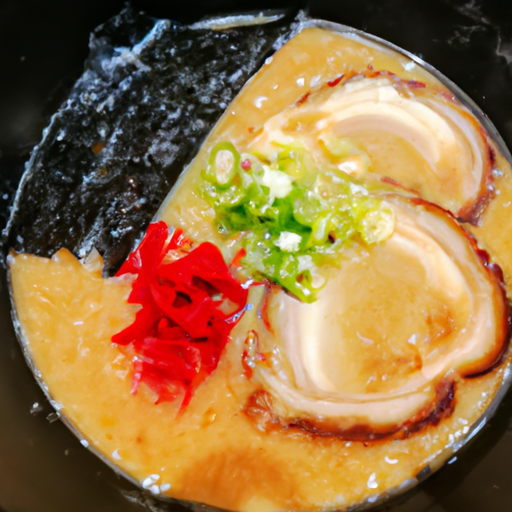The Journey of Ramen: A Bowlful of Tradition and Innovation

The Journey of Ramen: A Bowlful of Tradition and Innovation
Introduction
Ramen, a beloved noodle dish originating from Japan, has taken the world by storm with its rich flavors, varied ingredients, and cultural significance. This article delves into the intriguing history and enduring popularity of ramen, exploring how it has evolved over time while staying true to its roots.
Origins of Ramen
The roots of ramen can be traced back to China, where it was introduced in the late 19th century. Chinese immigrants brought their culinary traditions to Japan, including the art of making wheat noodles. Ramen started gaining popularity as street food in Japan during the early 20th century, and it quickly became a staple dish for many.
Traditional Ramen
Traditional ramen consists of four key components: broth, noodles, toppings, and condiments. The broth, typically made from pork, chicken, or seafood, is simmered for hours to achieve a rich and flavorful base. The noodles, made from wheat flour, are carefully crafted to achieve the perfect balance of chewiness. Toppings vary widely, ranging from char siu (roast pork) and bamboo shoots to soft-boiled eggs and nori seaweed. Lastly, condiments such as soy sauce, miso paste, and chili oil are added to enhance the overall flavor profile.
The Rise of Ramen Shops
Historically, ramen was predominantly enjoyed at humble street stalls and small eateries. However, in the 1950s, the rise of post-war economic growth in Japan led to the emergence of ramen specialty shops. These dedicated establishments allowed chefs to experiment with flavors and techniques, resulting in a culinary revolution that propelled ramen into the mainstream.
Innovation in Ramen
As ramen gained popularity, chefs and food entrepreneurs began experimenting with new and innovative styles. This led to the creation of regional variations such as Sapporo-style miso ramen, Hakata-style tonkotsu ramen, and Tokyo-style shoyu ramen. Each variation focuses on different broth, noodle, and topping combinations, showcasing the diverse culinary landscape of Japan.
Ramen Goes Global
Ramen’s popularity transcended national borders and reached a global audience. In recent years, ramen shops have popped up in major cities worldwide, each offering their own unique interpretation of this beloved dish. From New York to London, Melbourne to Tokyo, ramen has become an international culinary sensation.
Ramen Adaptations
As ramen gained a global following, chefs outside of Japan began incorporating local ingredients and flavors into their creations. This led to the birth of fusion ramen, where traditional Japanese elements are combined with other culinary traditions. For example, in the United States, you may find ramen topped with pulled pork, kimchi, or even avocado.
The Future of Ramen
The journey of ramen is far from over. Chefs continue to push the boundaries of this beloved dish, experimenting with new flavors, techniques, and presentations. As ramen evolves, its ability to adapt while maintaining its core essence is what keeps it relevant and exciting.
In Conclusion
Ramen’s journey from humble beginnings to global phenomenon is a testament to its versatility and enduring appeal. Rooted in tradition yet open to innovation, ramen reflects the dynamic nature of culinary traditions. Whether you savor a classic bowl of tonkotsu ramen or indulge in a unique fusion creation, each bite speaks to the rich history and limitless possibilities that the world of ramen offers.
* The post is written by AI and may contain inaccuracies.




